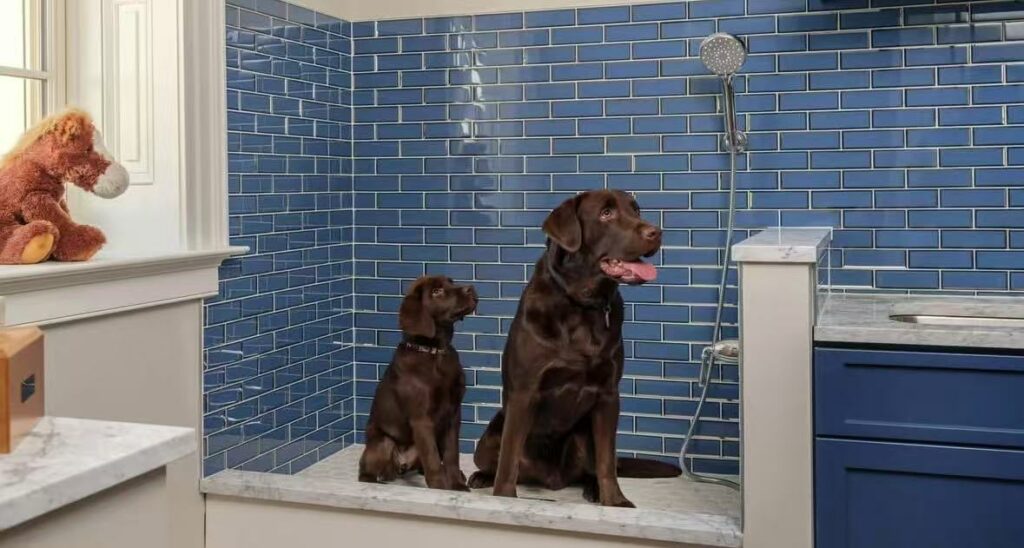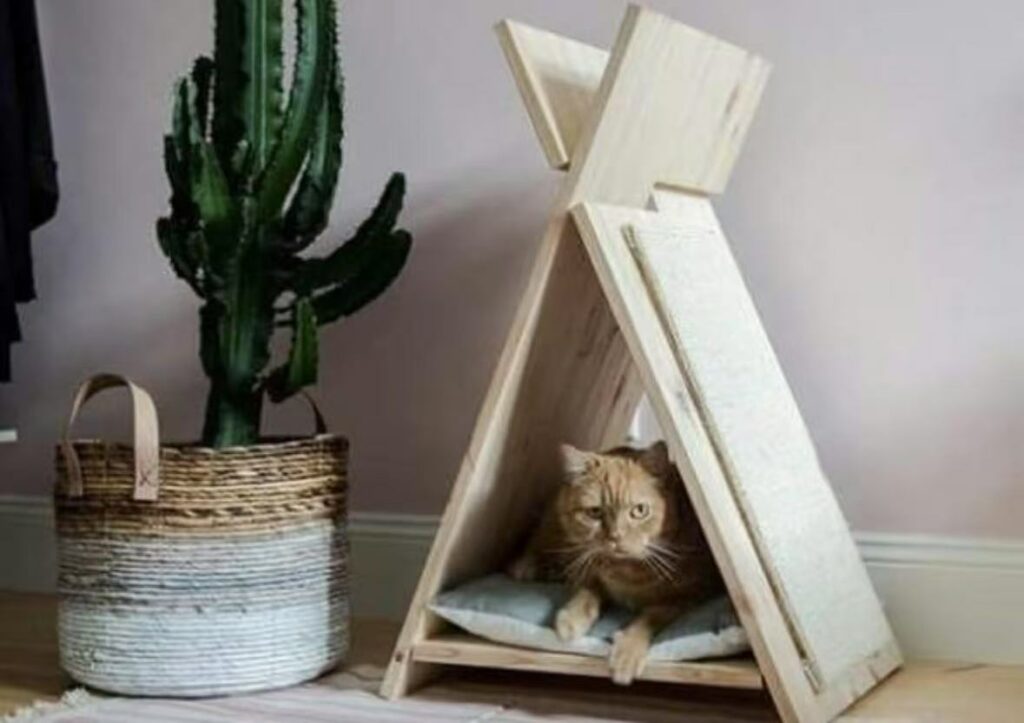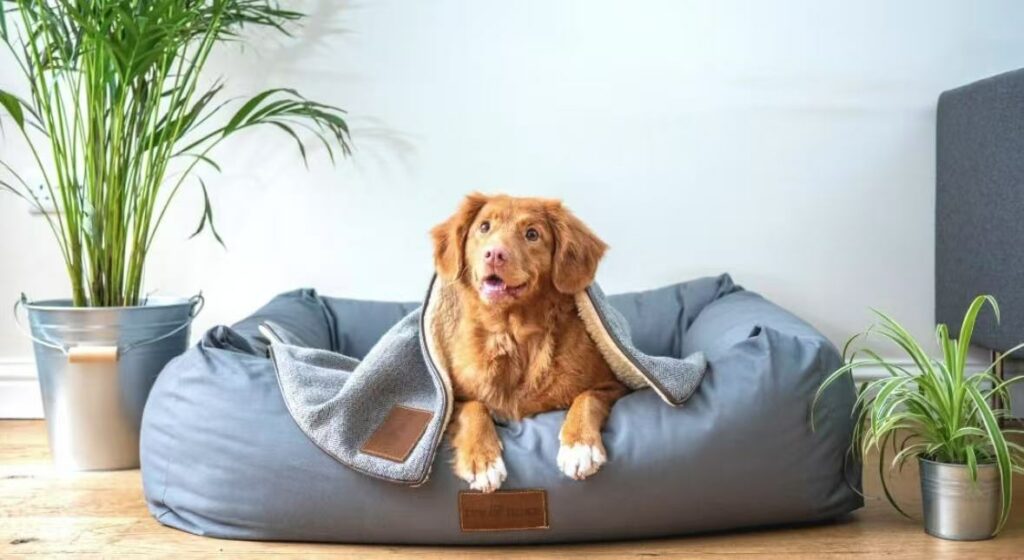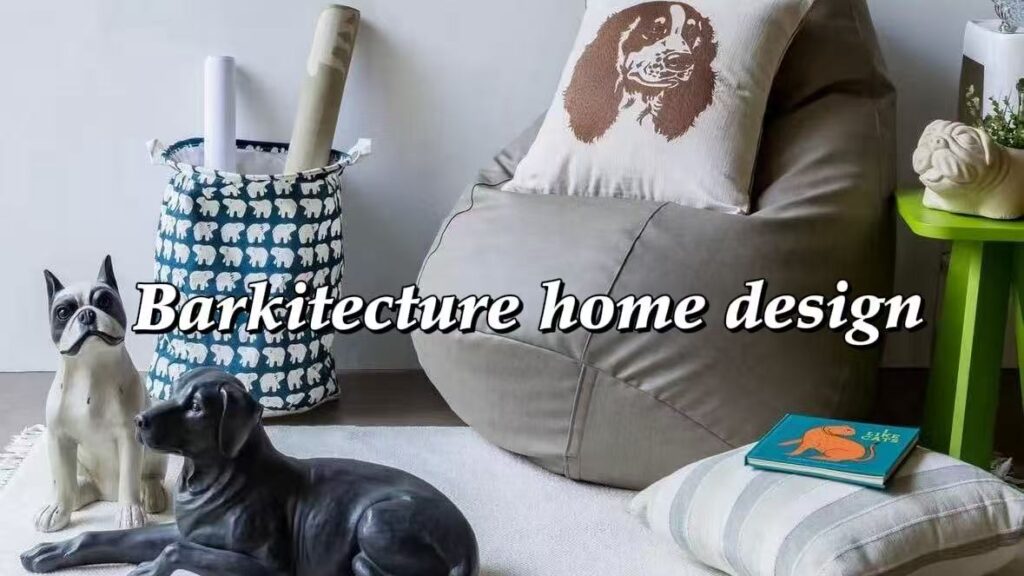Table of Contents
Introduction
The term “Barkitecture”—a blend of “bark” and “architecture”—has surged in popularity as pet ownership reaches record highs. According to the American Pet Products Association (APPA), 70% of U.S. households (90.5 million homes) now own pets, with millennials driving 35% of this growth. This cultural shift has transformed interior design priorities: no longer are homes designed solely for humans. Modern Barkitecture seamlessly integrates pet-centric functionality into stylish living spaces. Whether you’re renovating a Brooklyn studio or a suburban family home, this movement proves that interior remodel can harmonize aesthetics with the needs of furry companions. For example, a 2024 Zillow survey revealed that listings mentioning “pet-friendly features” sold 9% faster than average, proving Barkitecture isn’t just a trend—it’s an investment.
What is Barkitecture? Redefining Interior Design
Barkitecture transcends the basic dog bed or scratching post. It’s a philosophy that embeds pet wellness into every design decision. Consider these innovative approaches:
- Behavior-Driven Layouts: Cats thrive on vertical territory. A San Francisco studio apartment solved space constraints with floating walnut shelves doubling as cat highways, leading to a rooftop “catio”.
- Sensory Considerations: Dogs perceive colors differently. Using blue/gray tones in bedding areas (visible to canine vision) reduces overstimulation.
- Age-Adaptive Features: For senior pets, Memphis designer Sarah Winston creates low-profile beds with orthopedic memory foam and ramp-access to couches.
Case in Point: The “Purrfect Pantry” concept hides litter boxes behind cabinet doors with charcoal filters and motion-activated lighting. As noted by Architectural Digest, such solutions allow Barkitecture to “disappear when not needed but delight when discovered.”

Why Barkitecture Matters in 2025: Beyond the “Pet Tax”
1. The $350 Billion Pet Economy Driving Design Innovation
The global pet care market’s explosive growth (CAGR 6.1% through 2030 per Grand View Research) has birthed specialized industries:
- Tech-Integrated Solutions: Litter-Robot’s $799 self-cleaning unit syncs with apps to track cat health via waste analysis.
- Luxury Pet Real Estate: Brooklyn’s “Barkitect” firm charges $15,000+ to design custom dog spas with hydrotherapy tubs.
2. The Demand for Space Reconstruction in the Remote Work Revolution
According to Buffer’s 2023 Remote Work Report, 74% of remote workers consider pets their “essential colleagues” at home.
- Barkitecture addresses this through soundproof pet rooms (e.g., WhisperRoom soundproof pods) and distraction-free workspace layouts, minimizing pet interruptions during meetings.
- Silicon Valley engineer Emily transformed her study into a “human-pet shared workspace” with an adjustable-height desk (featuring a built-in cat bed underneath), boosting her productivity by 28% (tracked via RescueTime data).
3. Pet Longevity and the Need for “Lifespan-Centric Design”
The average lifespan of dogs and cats has increased by 40% compared to 20 years ago (AVMA data), making joint care for aging pets a necessity.
- Ramp Systems: PetSTEP foldable ramps connect sofas to floors.
- Optimized Floor Heating: Independent temperature zones, such as maintaining 26°C in dog bed areas (achieved via Ecobee smart thermostats).
4.The “Pet Parenting” Consumer Psychology of Gen Z
68% of Gen Z pet owners are willing to purchase luxury items for their pets (BarkBox survey) and prefer “Instagram-friendly” space designs.
- Instagrammable Pet Corners: Custom neon signs + mini photo studio backdrops.
- Subscription Service Integration: Built-in The Farmer’s Dog fridge compartments for easy frozen meal management.

5. Health Benefits Validated by Science
- Mental Health: The Human-Animal Bond Research Institute (HABRI) links designated pet zones to 28% lower owner stress levels.
- Air Quality: A Johns Hopkins study found homes using pet-specific HVAC filters (like Rabbit Air BioGS 2.0) reduced allergens by 63%.
Top 5 Barkitecture Trends for 2025: Where Form Meets Function
1. Invisible Pet Tech: The Art of Camouflage
- Hidden Litter Systems: Modkat’s $249 Top-Entry Litter Box fits discreetly into IKEA PAX wardrobes.
- Aesthetic Tech: SureFeed’s $199 Microchip Pet Feeder in brushed steel matches Sub-Zero appliances.
2. Biophilic Design: Nature as Playground
- Living Walls: San Diego’s Paws & Claws Hotel features cat-safe spider plants at climbing height.
- Organic Textures: Chilewich’s chew-resistant woven vinyl rugs ($45/sq.ft) mimic natural grasses.
3. Multi-Species Ecosystems
- Avian-Canine Harmony: A Colorado home installed a suspended parrot perch above a dog bed, allowing supervised interaction.
- Aquatic Zen: Koi ponds with tempered glass walls serve as both room dividers and feline TV.
4. Custom Pet Suites: The Ultimate Luxury
- Climate-Controlled Retreats: Boston’s “Doghaus” builds under-stair nooks with HEPA filters and soundproofing.
- Spa-Ready Grooming: Kohler’s pet shower system ($1,200) includes adjustable height sprayers and non-slip tiles.
5. Sustainable Barkitecture: Eco-Conscious Living
- Upcycled Dens: Etsy artisans convert vintage suitcases into $350+ cat beds with organic cotton cushions.
- Energy Efficiency: Endura Flap’s $299 thermal pet door reduces HVAC loss by 22% (ENERGY STAR certified).

Implementing Barkitecture: A Step-by-Step Blueprint
Step 1: Conduct a Pet-Centric Audit
Create a species-specific checklist:
- Cats:
☑️ Minimum 3 vertical pathways (shelves, cat trees)
☑️ Scratching surfaces ≥ 30″ tall (sisal preferred) - Dogs:
☑️ Bed placement avoiding high-traffic zones
☑️ Non-slip flooring near food/water stations
Step 2: Material Selection Matrix
| Scenario | Ideal Material | Product Example |
|---|---|---|
| High-Scratch Risk | Porcelain Tile (PEI 5) | Marazzi Ultradeck ($8.99/sq.ft) |
| Allergy-Prone Home | Cork Flooring | WE Cork Zen Collection ($5.49) |
| Chewing Hazards | Powder-Coated Steel | Tucker Murphy Pet Gate ($149) |
Step 3: Partner with Accredited Experts
Seek professionals with credentials like:
- NARI Pet-Friendly Remodeler Certification
- ASID Animal Habitat Design Specialty
Case Study – Historic Home, Modern Barkitecture
Project: 1920s Craftsman in Portland, OR
- Challenge: Blend historic integrity with needs of 3 Abyssinian cats and a Great Dane.
- Solutions:
- Attic Conversion: Added a “catio” with tempered glass walls and reclaimed barn wood climbing posts ($12,000).
- Discreet Dog Spa: Installed a tiled shower niche in the mudroom with handheld sprayer ($2,500).
- Flooring Overhaul: Replaced original carpets with strand-woven bamboo (Boo Bamboo, $7.99/sq.ft).
- ROI: Post-renovation appraisal showed 30% value increase, with agent citing Barkitecture features as key selling points.
Conclusion: The Barkitecture Imperative in Modern Interior Design
As pets ascend from companions to family members, Barkitecture evolves from novelty to necessity. By adopting these strategies, homeowners not only enhance daily life but future-proof their property’s market appeal. Ready to transform your space? → Use Our AI Home design tool to generate a customized pet-friendly home plan in 1 minutes.

